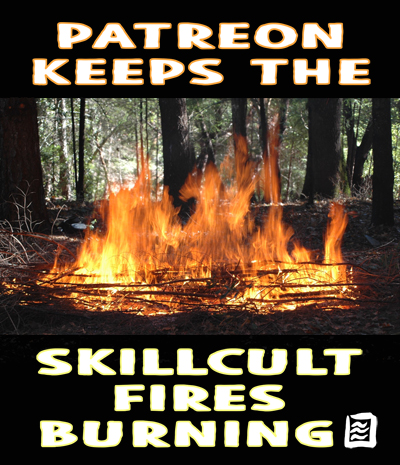An axe head with a wooden handle has some inherent problems. The head and handle are made of very different materials that behave differently. Steel has a very high density compared to wood. Wood is much more flexible than steel and will dent and break more easily. When using an axe, these differences can cause problems, such as the wood being damaged by forceful contact with the hard unyielding metal head, or the relatively high density of the steel head behaving differently than the handle, thereby putting stresses on the weaker wood. Breakage just below the eye is a very common occurrence. This article and video are an attempt to explain some common reasons why axes frequently break near the eye, having to do with design, or perhaps lack of design in some cases. Breakage in the main body of the handle can of course also occur, but I’m not really dealing with that here. I’m pretty sure that the greater percentage of axe handle breakages are initiated right where the handle meets the bottom of the eye, or within the first few inches of handle, especially if the breakage is not due to wonky grain or other defects. Shear stresses seem to be particularly high in this part of the handle.
In this article, I will be assuming that we are dealing mostly with American axe head patterns, which tend to have thinner eyes than European and Scandinavian axes. Even though American axe styles migrated back to Europe (many axe patterns on that side of the pond are actually American or modified American patterns) the axe eye sizes largely remained bigger than American axe eyes. This is an important point when we look at overall handle design, because with any given axe head, the eye shape just is what it is, and the size and shape of the wood where it enters the eye is therefore pre-determined. Some of these problems are obviated by the use of tapered axe eyes, in which the handle feeds in from the top and fits by friction, but that is a separate subject also. The assumption here is that we are dealing with American style patterns that are wedged from the top. For whatever mix of cultural and practical reasons, these axes have pushed the limits of strength and resilience of the wood used in handles, by evolving toward a small eye.
Aside from the size of the axe eye being fixed, there are two other things that are pretty much givens as well.
One is that the section of handle just below the eye, lengthwise (poll to blade) is wider than the rest of the handle. If the whole handle was the same front to back dimension as the eye length, it would be unusable, so the body of the haft has to slim down soon after leaving the eye.
Predetermined factor number two is that we need a slight flair in handle thickness just below the eye at the back of the handle, as well as on both sides, so that the head seats firmly around the bottom as it is driven on. The front edge of the handle can come straight out of the eye if desired, with no rise, but the other three sides need at least some flair, though not very much. In my view, it is always unnecessary, and also a detriment, to come out of the front of the eye and then immediately outward, forming a shoulder. I see no reason to do that, and every reason not to. If the handle isn’t completely straight coming out of the front of the eye, the rise is best made as a gentle transition.
WE CAN CONSCIOUSLY WORK AROUND THESE FIXED PARAMETERS. IN OTHER WORDS, DESIGN AROUND THE THINGS WE CAN’T CHANGE.



